Ponte Vecchiois located in northern Italy. The convenient geographical position, surrounded by the Apennine mountains, contributed to the early settlement of this area. Even before our era, Roman legionnaires lived here.
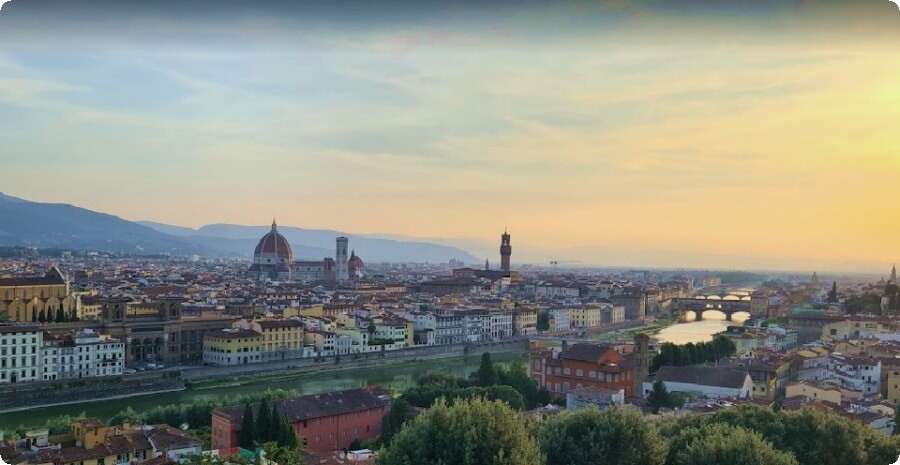
The heyday of the city's culture came in the 15th century, when the famous Medici family came to power. Most of the city's sights belong to this period. However, there are also earlier historical buildings.
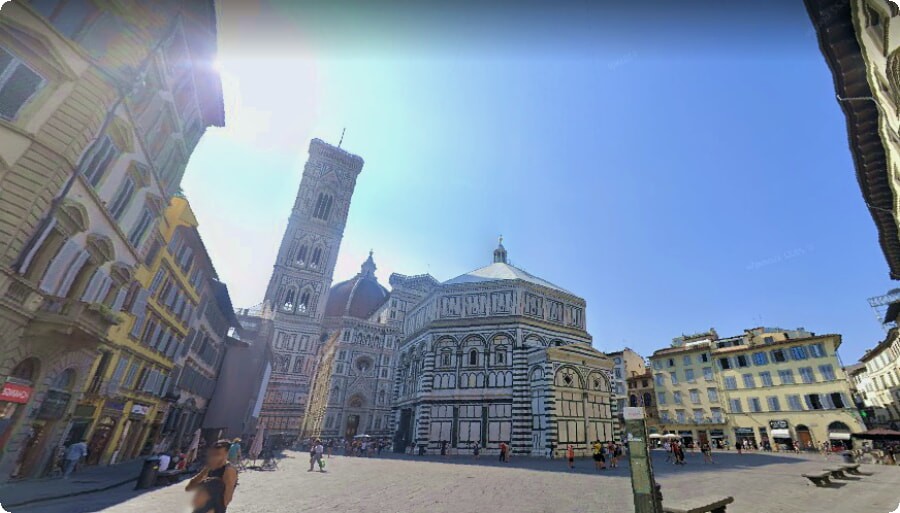
1. The central part of Florence is called Cathedral Square. Also this part is decorated with the Cathedral of Santa Maria del Fiore. It was built over a hundred years (14-15th century), 6 architects were engaged in construction in succession, designed by F. Brunelleschi. The three-nave cruciform temple is crowned with a massive dome. The walls are marbled in green, as well as pink and interspersed with white. The temple is huge, it was planned that it should accommodate all the townspeople. There is a clock in the cathedral, the arrow of which rotates in the opposite direction to the usual one.
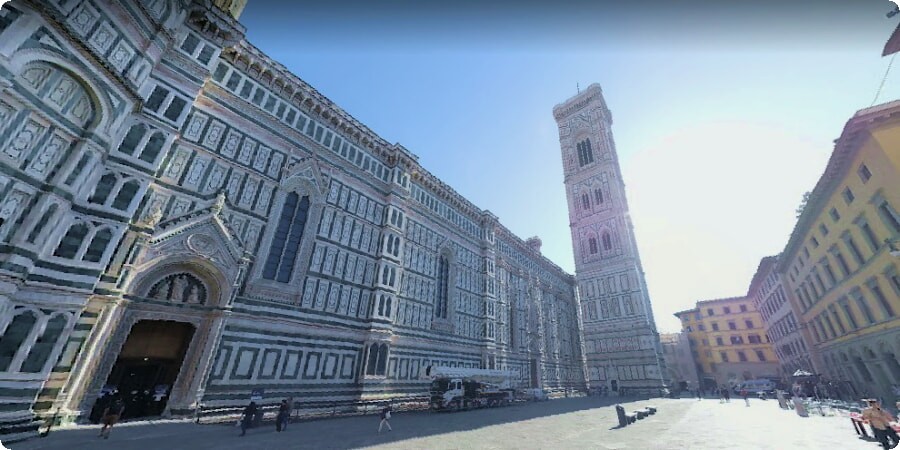
2. In the 14th century, the bell tower of Giotto was erected for the cathedral, named after the first architect-designer. The work was completed by Andrea Pisano and Fr. Talenti. The bell tower is decorated with mosaics made of red marble, as well as white and green colors.
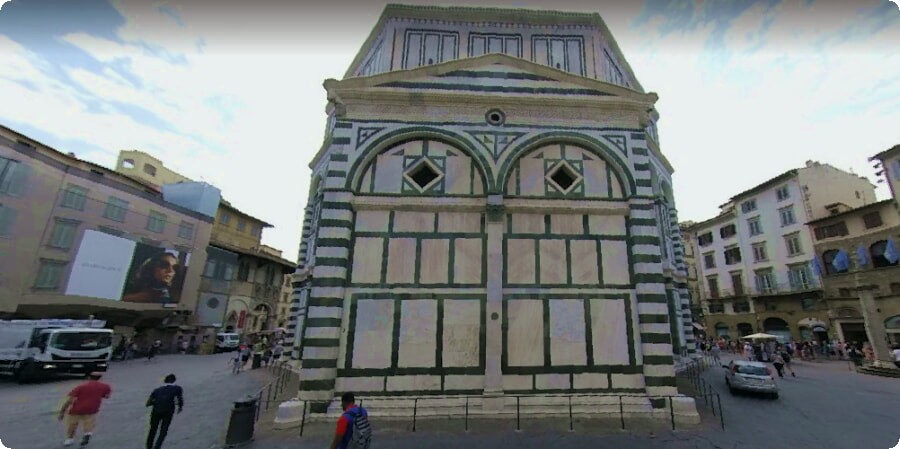
3. The Baptistery of San Giovanni, which is located in the same area, dates back to the fifth century. It is octahedral in plan, marble decoration appeared in the 6th century. The earliest - the southern gate is decorated with bas-reliefs from the life of John the Baptist. And the gate, known as the "Gate of Paradise" dazzles with ten panels with biblical scenes. For safety reasons, they have been replaced by copies, and the originals are in the museum.

4. The Uffizi Gallery is the most global collection of paintings, sculptures, miniatures of brilliant masters, starting from the Middle Ages - Botticelli, as well as Leonardo da Vinci, Caravaggio, Titian, Verrocchio, Mantegna. There are sculptures from the ancient period, as well as a unique collection of self-portraits. He designed the gallery of G. Vasari at the suggestion of Cosimo Medici. This is a complex of three-story buildings located opposite each other with a length of about 150 m. An open gallery runs along the first floor.
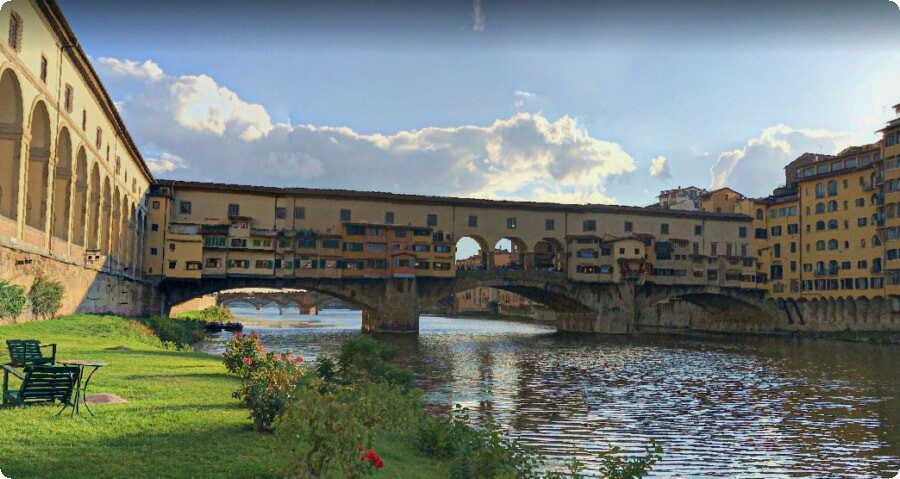
5. The oldest bridge in the city is Ponte Vecchio, which has been preserved since the 14th century. He is the only one who survived after the departure of the German occupiers. This building consists of three spans - arches, houses are built on both sides, which distinguishes it from any other bridge. The Vasari Corridor was built above the buildings. It was made so that Cosimo de Medici could pass from one palace to another, bypassing the butchers' shops. Initially, it was they who occupied part of the bridge. Later, shops of various profiles were located here.
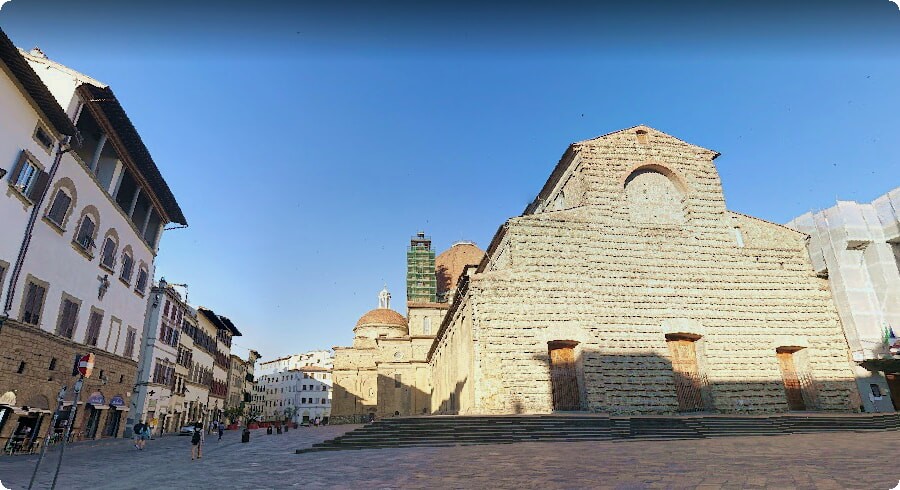
6. The Basilica of San Lorenzo, which was built in the 4th century, hence the maximum simplicity of the facades. Repeatedly rebuilt, it took on a modern look in the 15th century according to the project of F. Brunelleschi. The interiors are decorated with graceful columns, the ceiling of the building shines with gilding. The floors are tiled with biblical stories. The famous Michelangelo worked on the New Sacristy. Here is one of his most significant creations, figures - symbols: "Morning", "Evening", "Day", "Night".
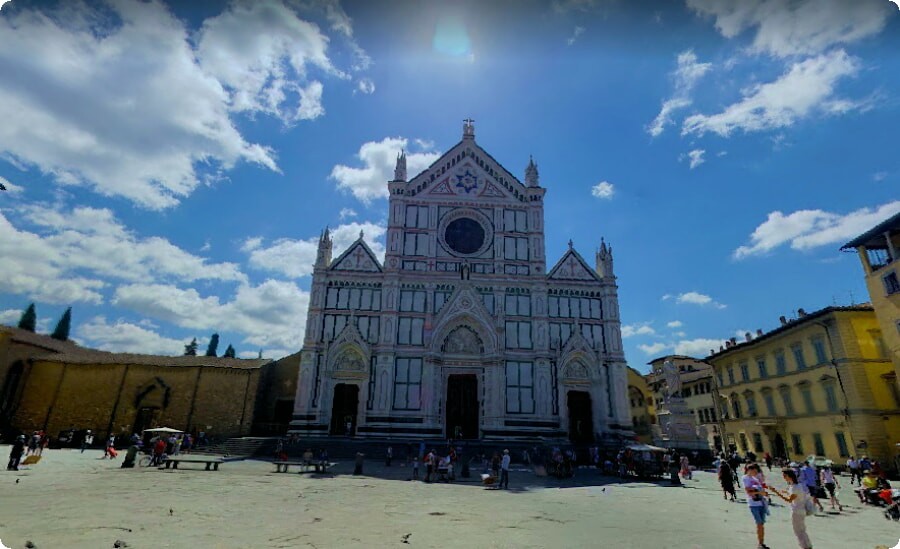
7. The Basilica of Santa Croce is a 13th-century building and is considered the largest Franciscan church. Dante and Galileo, Machiavelli, as well as composer G. Rossini and physicist E. Fermi rest in it, and in total there are more than three hundred burials and memorial plaques. The interiors of the basilica are a priceless collection of frescoes by Giotto, sculptures by Donatello and many more great masters. Through the stained-glass windows, the central nave, designed by G. Vasari, is permeated with sunlight from all sides.
A whole galaxy of the greatest names of the Italian Renaissance is associated with Florence. Its attractions are varied. Therefore, every tourist will find something interesting here.